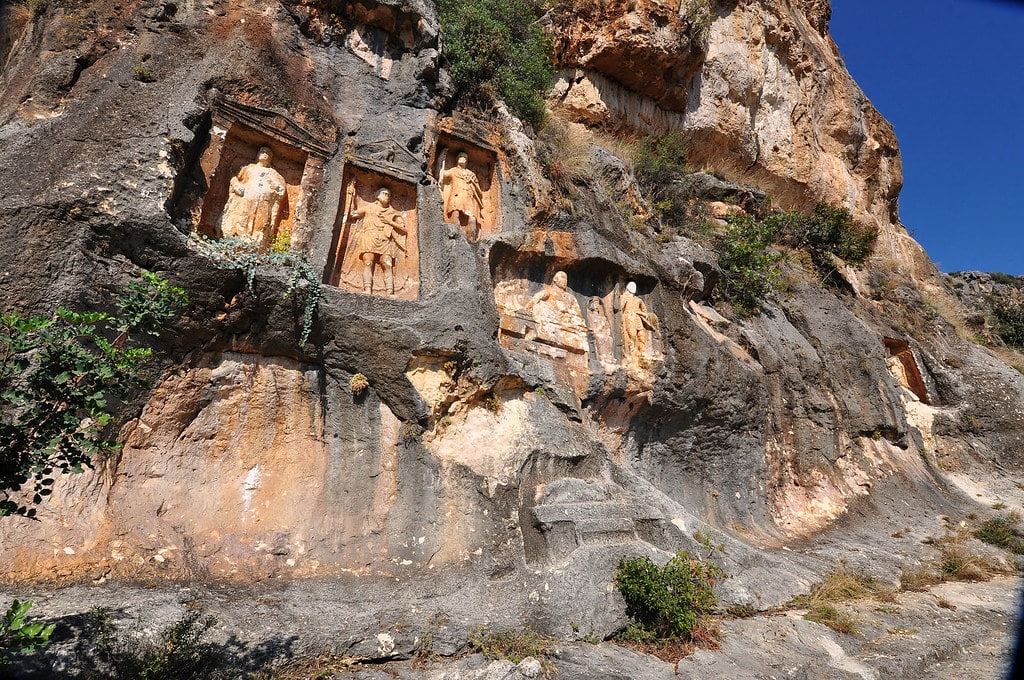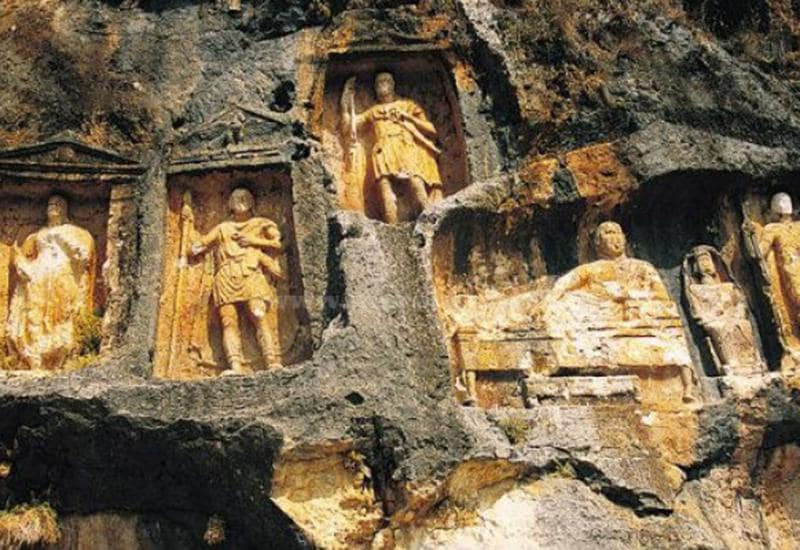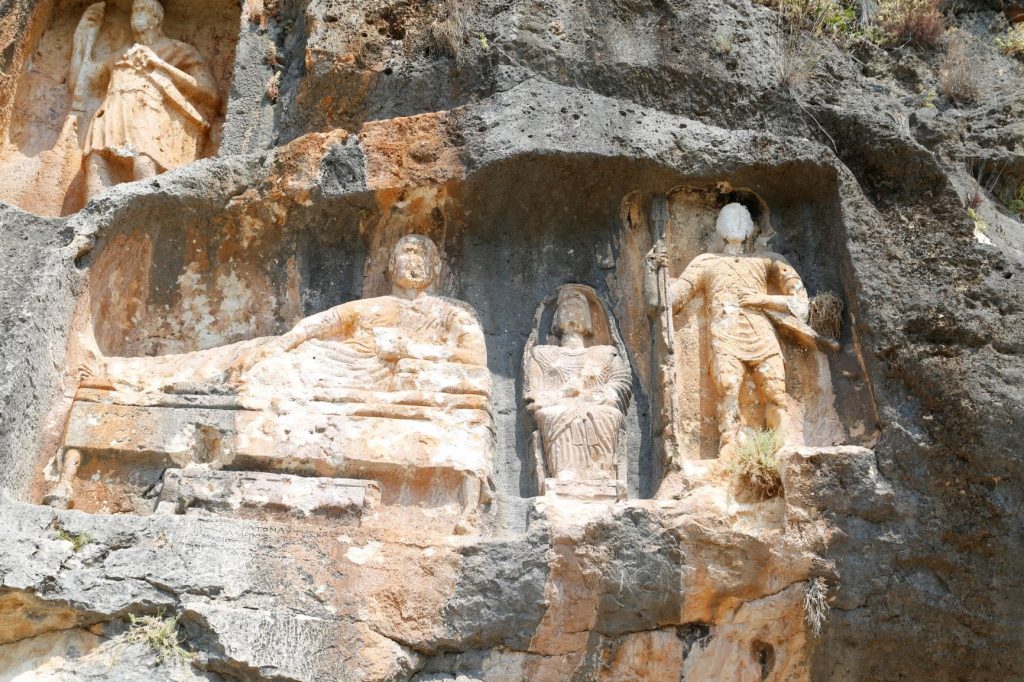
Ancient reliefs become target of treasure hunters in Mersin
An academic has cautioned that urgent protection is required for the historic Adamkayalar (Men of Rock) reliefs in the southern province of Mersin, which have been vandalized by people looking to find supposedly hidden treasures.
Adamkayalar is a place consisting of reliefs and figures made on the slopes of the Şeytan Deresi Canyon (Devil Creek Canyon), in a strategic position overlooking Kızkalesi in Mersin.
In terms of size, workmanship, and story, it is a rare value not only in Türkiye but worldwide.
“Adamkayalar holds significance on par with the Nemrut and Göbeklitepe regions. Therefore, it is imperative that Adamkayalar be promptly designated as an archaeological site. A project should be devised and immediately put into action,” said Murat Durukan, the chair of the Archaeology Department at Mersin University.
📣 Our WhatsApp channel is now LIVE! Stay up-to-date with the latest news and updates, just click here to follow us on WhatsApp and never miss a thing!!
Stating that Adamkayalar, located 60 kilometers west of the city possesses an immense potential as a tourism magnet, Durukan pointed out that this potential remains underutilized, and with the implementation of facilities, security measures, cameras, and lighting systems, Adamkayalar could be transformed into a unique destination.

“These are relatively simple projects. If we put them into action without delay, we can confidently say that both Mersin and Anatolia could gain a new tourism attraction,” he added.
Archaeologists think that the people depicted on the reliefs represent the kings and queens of the Ancient State of Olba and the purpose of these was to commemorate the dead.
There are 19 figures in 9 niches (cavities) in Adamkayalar. These 19 figures consist of 11 men, 4 women, 2 children, 1 mountain goat and 1 eagle. These reliefs depict various scenes in a story-telling manner. Each of the figures, such as the soldier’s farewell scene, the ritual scene, the dead feast scene, the scene where a man holds a bunch of grapes in one hand and holds a goat by the horns with the other, has a different story.

The inscriptions under the reliefs provide information about the name of the important person who died or the name of the person who made this relief. Based on these inscriptions, it is understood that the last version of the reliefs was completed in the 2nd century, during the Roman Empire. It is understood that the reliefs were completed in approximately 250 years, and the artistic style change in the construction of the reliefs is noticed due to the long duration of their construction.
Thanks to the relatively difficult transportation, Adamkayalar, which has been very well preserved until recently, was destroyed by some treasure hunters in 2015.
Although it was stated that there would be no items of financial value for treasure hunters in Adamkayalar, this statement was not sufficient. However, it is known that people of that period made their graves in other places that no one knows against the risk of theft, and this knowledge puts the famous reliefs in danger of extinction.
You may also like
- A 1700-year-old statue of Pan unearthed during the excavations at Polyeuktos in İstanbul
- The granary was found in the ancient city of Sebaste, founded by the first Roman emperor Augustus
- Donalar Kale Kapı Rock Tomb or Donalar Rock Tomb
- Theater emerges as works continue in ancient city of Perinthos
- Urartian King Argishti’s bronze shield revealed the name of an unknown country
- The religious center of Lycia, the ancient city of Letoon
- Who were the Luwians?
- A new study brings a fresh perspective on the Anatolian origin of the Indo-European languages
- Perhaps the oldest thermal treatment center in the world, which has been in continuous use for 2000 years -Basilica Therma Roman Bath or King’s Daughter-
- The largest synagogue of the ancient world, located in the ancient city of Sardis, is being restored











Leave a Reply